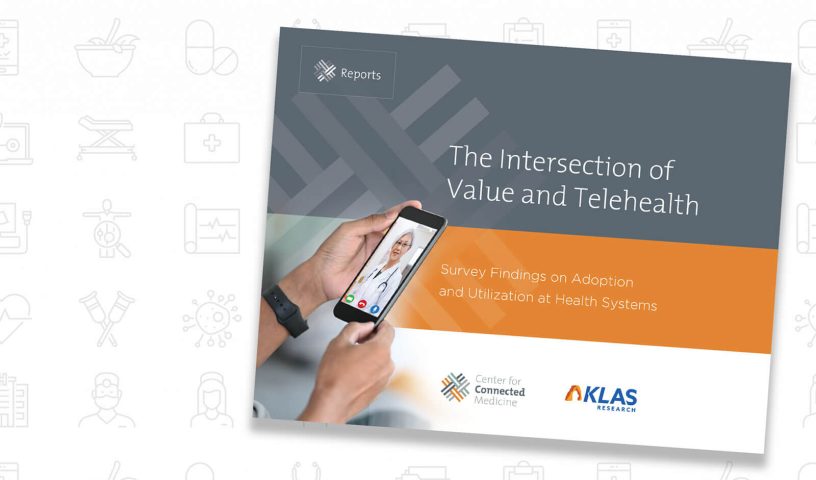
Sep 7, 2021
Research Report Explores the Intersection of Value and Telehealth
The Center for Connected Medicine finds that telehealth utilization is leveling off at health systems; but expansion is planned for chronic care management, behavioral health, and urgent care.
More than a year after many hospitals ended their COVID-19 shutdown of non-emergency care, the use of telehealth for patient visits is leveling off at 20% or less of all appointments, according to new research from the Center for Connected Medicine (CCM).
The CCM report, “The Intersection of Value and Telehealth,” finds that more than 80% of survey respondents said one-fifth or less of their organizations’ appointments were being conducted virtually. And of the small number of hospitals and health systems reporting 30% or more of patient volume as virtual, many said they expected that number to decline as the pandemic wanes.
Conducted in partnership with KLAS Research in May and June 2021, prior to the uptick in COVID-19 cases due to the Delta variant, the report is based on a survey of nearly 100 executives, directors, and managers in technology, informatics, business, and clinical roles at U.S. health systems and hospitals.
Despite lower post-pandemic telemedicine volumes at many health systems, the CCM also found that provider organizations are looking to expand telehealth services to better manage the health of patient populations while keeping costs down. Chronic care management, behavioral health, and urgent care were the top three service lines cited by survey respondents for the future expansion of telehealth.
Learn more about these key findings and more, including what percentage of respondents said they are measuring and analyzing patient use of telehealth, at the CCM website.


